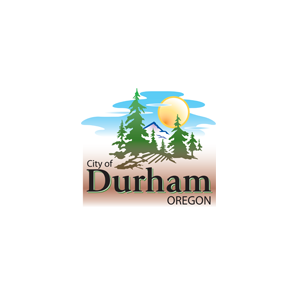Transformational Partnerships Bring New Life to an Urban Stream
Fanno Creek is an urban stream that begins in Portland’s southwest hills and meanders 15 miles through neighborhoods in Portland, Beaverton, Tigard and Durham, where it meets the Tualatin River. The creek and its tributaries cross private residential, industrial and commercial properties, as well as parklands and natural areas owned by Clean Water Services, Metro, Tualatin Hills Park & Recreation District and the cities of Beaverton, Tigard and Durham. For more than a decade, Tree For All partners have been collaborating to transform the Fanno Creek reach into a place where people, plants and wildlife flourish.
The Site
First planting: 2006
Size: 152 acres
Stream length: 20,202 feet
Total to date: 248,708 plants
Plant communities: Emergent Marsh, Forested Wetland, Riparian Forest, Scrub Shrub
The Challenge
Historically, the body of water we now know as Fanno Creek wound through a dense forest abundant with bear, deer, beaver and cutthroat trout. Water that flowed to the creek was naturally slowed and filtered through trees and vegetation. A channel meandered across the landscape to the floodplain.
In 1847, Augustus Fanno made the first land claim in Washington County and began a creekside onion farm. During the rapid growth that followed, the creek was channelized. Forest was cleared. Roads were built. Trees and shrubs were removed, and in their absence, non-native vegetation invaded. The consequences for Fanno Creek were severe: higher and faster flows, increased pollutants from water running off the altered landscape, and accelerated bank erosion.
To enhance the health of this once-vibrant watershed, a coordinated effort across multiple jurisdictions and private parties was crucial. Planning and on-the-ground efforts date back to the 1980s and 1990s. Since the early 2000s, an approach grounded in transformational partnerships has been key to executing these interconnected, landscape-scale projects.
The Transformation
Since 2004, Tree For All partners have restored more than seven miles of Fanno Creek streamside and 150 acres of greenways. Strategies include streambank stabilization; floodplain reconnection; and enhancement of amenities for recreation and active transportation. On the revegetation front, volunteers, partners and reforestation contractors have planted native trees and shrubs by the hundreds of thousands, greatly increasing stream shade, improving air quality and enhancing wildlife habitat.
Today, the network of natural areas along Fanno Creek boasts a diversity of forests and wetlands, from spreading Oregon oaks and tall mature ponderosa pines to wetlands full of sedges, rushes and Oregon ash trees. Fish and amphibians have returned, along with birds, including wood ducks, hooded merganser, great blue herons and white egrets. Beaver activity has further increased wildlife habitat by providing access to water for dozens of wildlife species throughout the long dry summer.
As the pieces of a streamside regional trail have come together, Fanno Creek has become a go-to natural area for the growing communities just west of Portland. In Beaverton, the Tualatin Hills Park & Recreation District (THPRD) reports that the Fanno Creek Trail, which features a popular disc golf course and miles of biking and walking trails, is one of its most-used trail systems. For the City of Tigard, the trail is a key element in the revitalization of downtown and its aspirations to become “the most walkable city in the Pacific Northwest.” Regional plans, led by Metro, call for the Fanno Creek Trail to be part of an active transportation corridor, allowing car-free travel from the banks of the Willamette River in downtown Portland to the Tualatin River as it flows through the small city of Durham.
On the nearer horizon, the transformation at Fanno Creek continues to unfold. The U.S. Geological Service has conducted an extensive beavers-and-hydrology study. In the heart of Tigard, the City of Tigard and Clean Water Services are restoring the portion of the creek closest to Ash Street. Further north, with funding from Metro’s Nature in Neighborhoods program, partners—including THPRD, Clean Water Services, Friends of Trees and local residents—have embarked on a “Fanno Floodplain Fix.” Both projects involve re-meandering segments of the creek, enhancing habitat through revegetation, and adding or improving amenities for cyclists and pedestrians.
By bringing best practices to bear, Tree For All partners continue to transform Fanno Creek in ways that benefit our economy, community and ecology.
Learn More
This Fanno Creek profile covers a series of interconnected projects.
Project-by-Project Statistics
Englewood
First planting: 2007
Size: 17.08 acres
Stream length: 5,306 feet
Total to date: 32,866 plants
Plant communities: Emergent Marsh, Forested Wetland
Hall Boulevard to Ash Avenue
First planting: 2007
Size: 16.55 acres
Stream length: 3,183 feet
Total to date: 33,002 plants
Plant communities: Forested Wetland, Riparian Forest
OES Marsh
First planting: 2011
Size: 31.40 acres
Stream length: 3,828 feet
Total to date: 41,254 plants
Plant communities: Emergent Marsh, Riparian Forest, Scrub Shrub
Greenway Park
First planting: 2007
Size: 22.06 acres
Stream length: 9,372 feet
Total to date: 153,116 plants
Plant communities: Emergent Marsh, Forested Wetland, Riparian Forest, Scrub Shrub
First planting: 2013
Size: 26.61 acres
Stream length: 3,246 feet
Total to date: 55,529 plants
Plant communities: Riparian Forest, Scrub Shrub
First planting: 2014
Size: 6.52 acres
Stream length: 1,440 feet
Total to date: 30,000 plants
Plant communities: Riparian Forest
First planting: 2014
Size: 5.11 acres
Stream length: 1,743 feet
Total to date: 26,300 plants
Plant communities: Riparian Forest
First planting: 2016
Size: 8.43 acres
Stream length: 757 feet
Total to date: 22,700 plants
Plant communities: Oak Woodland, Riparian Forest, Scrub Shrub
Derry Dell
First planting: 2015
Size: 5.67 acres
Stream length: 1,283 feet
Total to date: 89,820 plants
Plant communities: Emergent Marsh
Click to explore the change in mature native plant coverage between 2007 (purple) and 2014 (orange).
On the blog: Photos and stories from the June 2017 Fanno Creek visit of the delegation from Mexico's Laja Watershed.
Fanno Creek visitor information available from THPRD and City of Tigard.












































